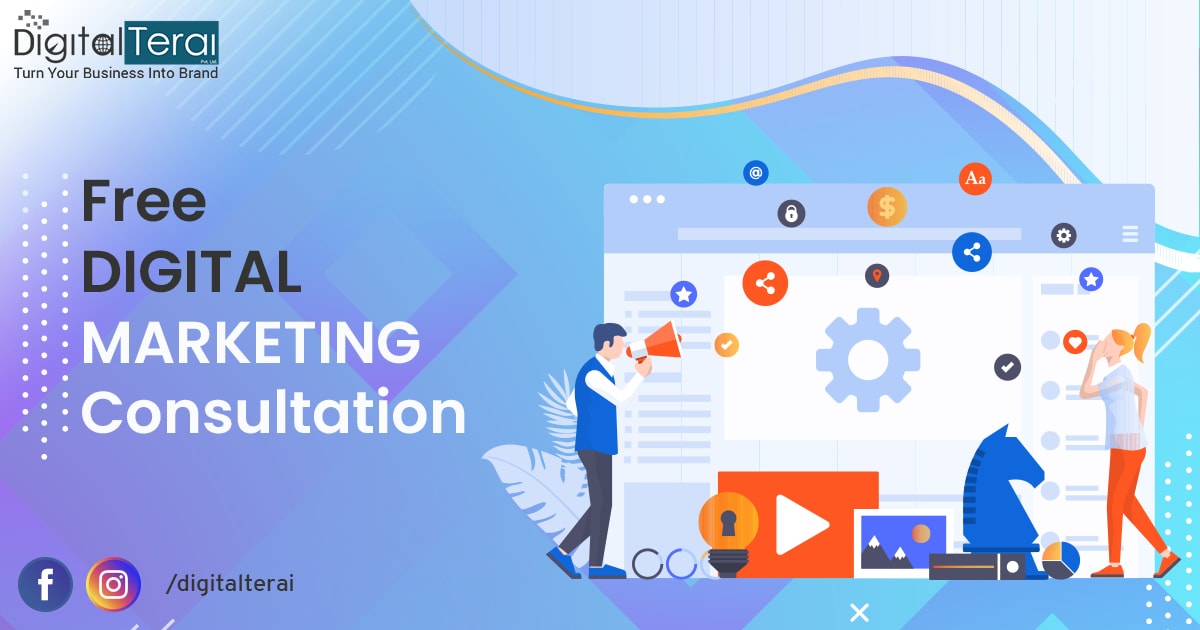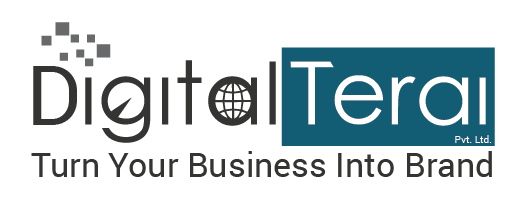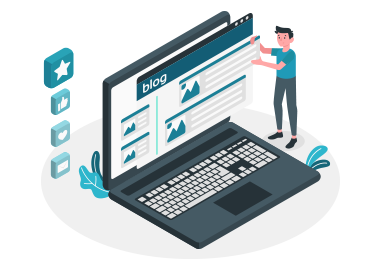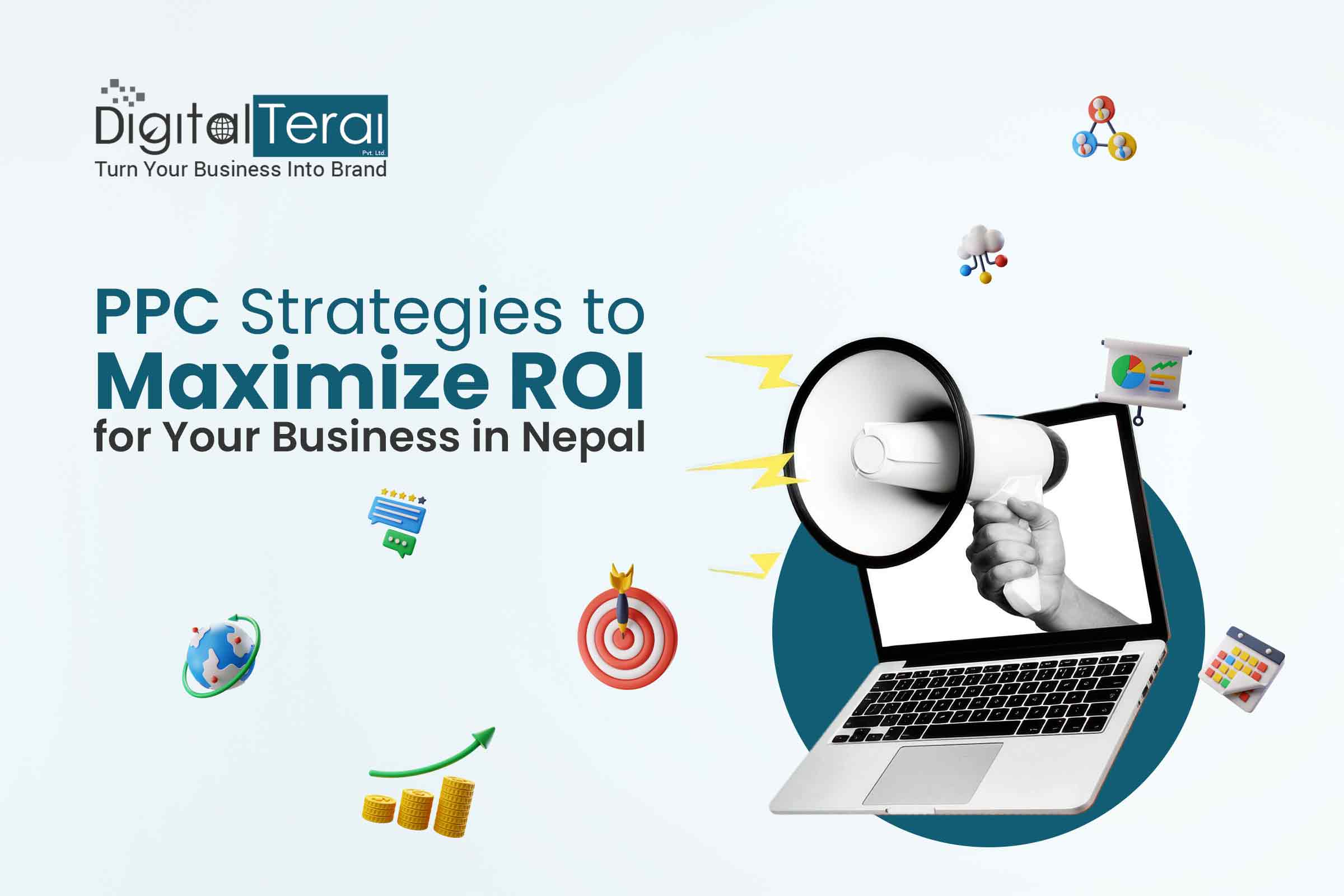PPC advertising has been a differentiator for business owners seeking greater exposure online, quality leads, and revenue. As more Nepali consumers go digital, competition in online advertising is heating up, and PPC is one of the most direct, measurable, and cost-effective tools to stay ahead..
Whether you operate a startup in Kathmandu or an eCommerce venture in Pokhara, knowledge and application of effective PPC strategies are crucial in a bid to maximize your Return on Investment (ROI) and garner desired results out of each rupee you are investing.
In this blog, we will explore how Nepalese businesses can use smart PPC tactics to optimize campaigns, reduce costs, and achieve better results.
Choosing the Right PPC Platform (Google Ads vs Facebook Ads)
_1754291787.jpg)
Before diving into advanced strategies, it’s important to choose the right platform based on your business goals and audience behavior. Google Ads and Facebook Ads dominate the PPC space in Nepal, but each offers distinct benefits.
Here is a comparison table showing 7 key features to help you choose between Google Ads and Facebook
|
Feature |
Google Ads |
Facebook Ads |
|
Ad Type |
Google Ads supports search, display, shopping, and video ads on platforms like YouTube. |
Facebook Ads allows image, video, carousel, story, and reel formats across its platforms. |
|
Audience Targeting |
Google Ads targets users based on search intent through keywords and queries. |
Facebook Ads targets users based on interests, behavior, demographics, and custom audiences. |
|
Cost-per-Click (CPC) |
Google Ads usually has a higher cost-per-click, especially in competitive industries. |
Facebook Ads generally offers a lower CPC and broader audience reach. |
|
Conversion Intent |
Google Ads captures high-intent users who are actively searching for products or services. |
Facebook Ads reaches users who may not be actively searching but can be influenced while browsing. |
|
Ad Placement |
Ads on Google appear in search results, YouTube videos, and across the Google Display Network. |
Ads on Facebook show up in feeds, stories, Messenger, Instagram, and the Audience Network. |
|
Campaign Goal Fit |
Google Ads is ideal for driving direct conversions like leads or purchases. |
Facebook Ads works well for building brand awareness and engaging potential customers. |
|
Analytics Tools |
Google Ads integrates with tools like Google Analytics and Keyword Planner for in-depth insights. |
Facebook Ads offers performance tracking through Facebook Insights and Audience Manager. |
15 Proven Strategies to Maximize ROI
To achieve the best return on investment from your PPC campaigns, it's not enough to simply run ads; you need a strategy that aligns with your audience, budget, and business goals. By adopting the following well-proven strategies, you can stretch every rupee, optimize your conversion rate, and achieve sustained growth with smart ad investment.
1. Target high-intent, long-tail keywords
Long-tail keywords are long, descriptive terms with high buy intent, e.g., “laptop repair in Kathmandu for low cost.” Long-tail keywords are less competitive with lower cost-per-bid, though with a premium stream. Long-tail keywords are for users lower down in the buying funnel, though closer towards buying.
Including high-intent long-tail keywords eliminates adventurous searchers and converts heavier leads. For example, a buyer who searches for “best trekking gear for Everest Base Camp” is far more favorable than a buyer who searches for “trekking.” Make an attempt to include geographic product-based qualifiers in your keywords for high-targeted visibility.
2. Use geo-targeting to focus on high-converting locations
Local targeting for higher conversions helps you present ads in places where your ideal buyers live, for instance, in Kathmandu, Pokhara, or Dharan. It is an important strategy for local service providers, brick-and-mortar stores, or businesses with demand in specific areas. It also provides you with an advantage in not spending any money in places where you don’t conduct business.
In an instance like a restaurant brand in Pokhara, you are unlikely to get a lot of conversions from ad buys in Biratnagar. Even targeting a district, let alone a neighbourhood, enhances relevancy and interaction for campaigns. Geo-targeting also allows for regional tailoring for offers, language, or creatives.
3. Implement negative keywords to reduce wasted spend
Negative keywords are the words for which you don't want your ad to be triggered. By adding them, you prevent your ad from being triggered when you are handling an irrelevant question, protecting your budget and making targeting much more efficient. For example, a high-quality watch seller may want to ban the term “cheap” or “free.”
Without negatives, your ads could be delivered in front of unqualified, uninterested audiences, towards a low return on investment. Ongoing scans for search term reports also lead you towards finding wasteful keywords and turning them off. Long-term, you are improving overall ad quality and ad relevancy.
4. Run A/B tests on ad creatives and headlines
A/B testing allows you to experiment with variations in ads, headlines, descriptions, Images, etc., and find out which one is best. Incremental tweaks on an ongoing basis perfect your messaging for an increased CTR. Cumulative, incremental tweaks can fund a radical ROI lift.
For example, testing “Book Your Adventure Today” versus “Plan Your Himalayan Trek Now” may yield different engagement levels. Track results closely and pause underperforming versions to allocate more budget to winners. Continuous testing keeps your ads current and fresh with the audience's desire.
5. Optimizing landing pages for conversions
Your landing page is where visitors decide whether to take the next step, so it must deliver on the ad’s promise. Your page must load well, rotate, and provide a call-to-action. It must also provide the same tone and message in the first ad.
Adding a trust badge, testimonials, or limited-time offers establishes trust with users and calls people to action. Adding locally specific content or bilingual copy constructs the conversion for Nepalese users as well. Optimize different variations for different layouts, offers, or messages for optimal conversion.
6. Use ad extensions to boost visibility and CTR
Ad extensions help you include additional data in your ads—site URLs, callouts, or a phone number, that makes your ads usable and clickable. Ad extensions can differentiate your ad from other ads on a cluttered page of search results, as well as tend toward a greater click-through rate. Google penalizes well-written ads with good ad position, as well as low CPC.
For example, a tour operator can add sitelinks like “Trekking Packages,” “Get a Quote,” or “Customer Reviews.” It gives added context, making people trust and come in for an extra bite. Ad space is optimized maximally when you are making use of all extensions, with high engagement.
7. Set up conversion tracking and define key goals
Without conversion tracking, you won’t know which keywords, ads, or campaigns are making you money. Tracking provides you with a view of desired action, e.g., buy, form fill, or calls. Google AdWords, Facebook Ads provide built-in tracking ability.
Exactly defining a conversion for your business anchors your optimization. For a school, a conversion could be a course lead; for an e-commerce store, a sale. Measurement lays the basis for making smart decisions and efficient budget allocation.
8. Focus on high-performing times with ad scheduling
Ad scheduling gives you the ability to choose when you are going to run your ads, when people are extremely engaged, and when there are good conversion possibilities. It helps your budget not get wasted during off-hours, during early morning hours, and during night hours. It is very useful for advertisers with fixed business hours in Nepal.
Review your campaign reports to identify your most profitable time slots. If you find most conversions happen between 10 a.m. and 6 p.m., schedule ads accordingly. Over time, this approach maximizes exposure during high-conversion windows.
9. Start with manual CPC, then shift to automated bidding
Manual cost-per-click (CPC) gives you total control over cost, something you want when you are testing. Once you get enough data, you can then switch over to auto-bidding strategies like Target CPA or ROAS for scale. Those function through the power of machine learning, making bids in real time.
Automated bidding works well when you already possess stable conversion tracking and historical data. It can proceed faster than manual settings to adjust for shifting behavior. Manual CPC starting offers a safer experimentation for new Nepali pay-per-click business startups.
10. Segment campaigns by device, location, or audience
By segregating your campaigns with columns for device type (desktop/tablet, mobile/tablet), user location, or audience segment, you can tailor your messaging, bids, etc., with improved precision. Individuals behave differently, so breaking them down helps you track performance, as well as run targeted ads better. It also spells out your top-performing segments.
A mobile user in Kathmandu is distinct from a Pokhara desktop user. With different campaigns, you can optimize bidding, creatives, and a landing page accordingly. Segmentation also maximizes optimization with a definite objective, resulting in overall performance being improved.
11. Use remarketing to re-engage past visitors
Remarketing gives you a second opportunity with users who came onto your website, yet failed to convert. Such users are highly likely to convert since they were already inclined towards your product or service. You can retarget based on action taken, page viewed, etc.
For instance, a user who has looked through your “Tour Packages” page can be retargeted with a discount offer through Google Display ads or Facebook. It keeps your brand in mind and has them return for a second look. Remarketing is a very affordable PPC strategy for improving ROI.
12. Continuously monitor Quality Score and improve it
Quality Score is Google's internal ad judgment regarding ad relevancy, CTR, and landing page experience. For a good Quality Score, CPC can decrease, enhancing ad position. It is an important metric with a positive direct impact on your campaign's performance.
Optimization of ad copy, keyword alignment, and optimization of landing page usability can enhance your Quality Score. Periodical Quality Score review is a means through which you can identify weak spots in order to optimize. For Nepalese advertisers, Quality Score optimization implies extending limited budgets.
13. Exclude underperforming placements in Display campaigns
Display ads are sometimes placed on irrelevant websites, leading to low-quality traffic for you. Viewing placements informs you where you can block these sources. This keeps your budget where you prefer, on websites engaging with your audience.
Utilize Google Ads placements exclusions to block particular domains or content categories. Over time, this optimization improves CTR and conversion rate. Maintain campaigns as high quality by continually reviewing, then purging placements.
14. Leverage audience insights for better targeting
Audience insights provide you with pertinent data on your users' demographic characteristics, behavior patterns, and preferences. This informs you how you can design a more successful and customized ad campaign. Facebook Audience Manager and Google Analytics are fantastic tools for learning about these patterns.
That is, assuming your best-performing converters are males in the 25-34 year age group in Kathmandu, you would design copy, graphics based on these people. It determines everything from targeting right down to the tone of messaging. It eliminates guessing entirely and maximizes ROI.
15. Review analytics regularly and optimize based on data
PPC campaigns also must be constantly monitored for desired results. By going over analytics, you can see patterns, observe problems, and make informed changes. This keeps your campaigns up-to-date based on actual user behavior, rather than guessing.
Utilize Google Analytics, Facebook Ads Manager, and UTMS tracking for in-depth performance metrics. Monitor metrics such as bounce rate, conversion rate, and cost per acquisition. Decisions based on data allow you to invest wisely with good returns in the long run.
7 Common PPC Mistakes to Avoid
Despite well-planned strategies, common pitfalls in PPC can silently consume your budget, as well as impact campaigns' performance. By identifying and avoiding these pitfalls in the earlier steps, Nepalese business entrepreneurs can also save money, besides enhancing ad performance considerably.
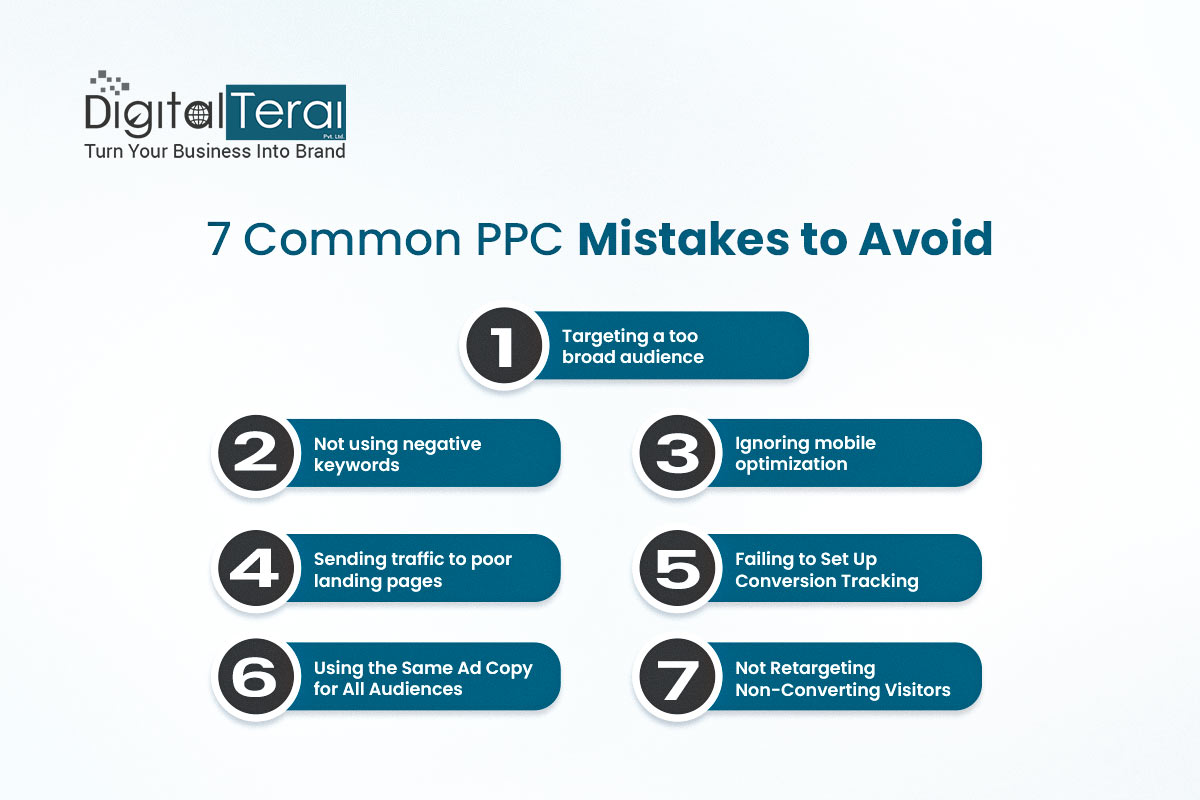
Here are 7 common ppc mistakes to avoid:
- Targeting a too broad audience: Broad targeting requires you to put your ad in front of individuals who aren't interested in your product, resulting in low conversion rates, wasteful ad expenditure, etc. Target in-market people only, based on behavior, intent, and location.
- Not using negative keywords: Not including negative keywords means your ad appears for non-relevant searches. It sends unqualified traffic for a greater cost, and increases your cost without improving results.
- Ignoring mobile optimization: Since most Nepali users come online with a mobile, poorly optimized mobile experiences can adversely impact engagement as well as conversion. Make sure your ad and landing page are ever optimized for mobile.
- Sending traffic to poor landing pages: If your landing page is slow, confusing, or doesn’t match the ad message, users will bounce without converting. A strong, relevant, and action-driven page is essential to capture interest
- Failing to Set Up Conversion Tracking: Without conversion tracking, you can’t measure campaign success or know what’s driving results. This makes it impossible to optimize your ads effectively.
- Using the Same Ad Copy for All Audiences: One-size-fits-all ad copy fails to connect with diverse user segments. Tailor your messaging to different audience interests, behaviors, and platforms for better performance.
- Not Retargeting Non-Converting Visitors: Many users need multiple touchpoints before converting. Skipping remarketing means missing out on warm leads who already showed interest in your product or service.
Conclusion
PPC advertising, when done right, can deliver outstanding results for businesses in Nepal. From targeting long-tail keywords to optimizing ad creatives and using data to refine strategy, every detail counts when you aim to maximize ROI.
As digital marketing in Nepal continues to grow, consistent optimization, testing, and local relevance will separate successful campaigns from mediocre ones.
Need expert help running high-converting PPC campaigns in Nepal? Contact Digital Terai today, our PPC experts are ready to drive results for your business!
FAQs
How can PPC maximize ROI for my Nepalese business?
PPC helps you reach your target audience directly when they're ready to buy. With proper targeting, bidding, and optimization, you only pay for clicks that bring real value, improving your ROI.
Should I use Google Ads or Facebook Ads for my business in Nepal?
It depends on your goals. Google Ads captures search intent, while Facebook is better for brand awareness and audience targeting. Many successful campaigns use both.
How to reduce PPC costs and maximize ROI?
Use long-tail keywords, negative keywords, conversion tracking, A/B testing, and schedule ads during peak hours. Always optimize based on performance data.
How much does PPC advertising cost in Nepal?
Costs vary depending on industry, competition, and platform. On average, CPC in Nepal ranges from NPR 10 to NPR 60, with monthly budgets starting from NPR 5,000 for small businesses.
What is a good ROI for a campaign?
A typical PPC ROI is around 200–300%. For every NPR 1000 spent, you should ideally generate NPR 2000–3000 in returns. But results vary by industry and strategy.
